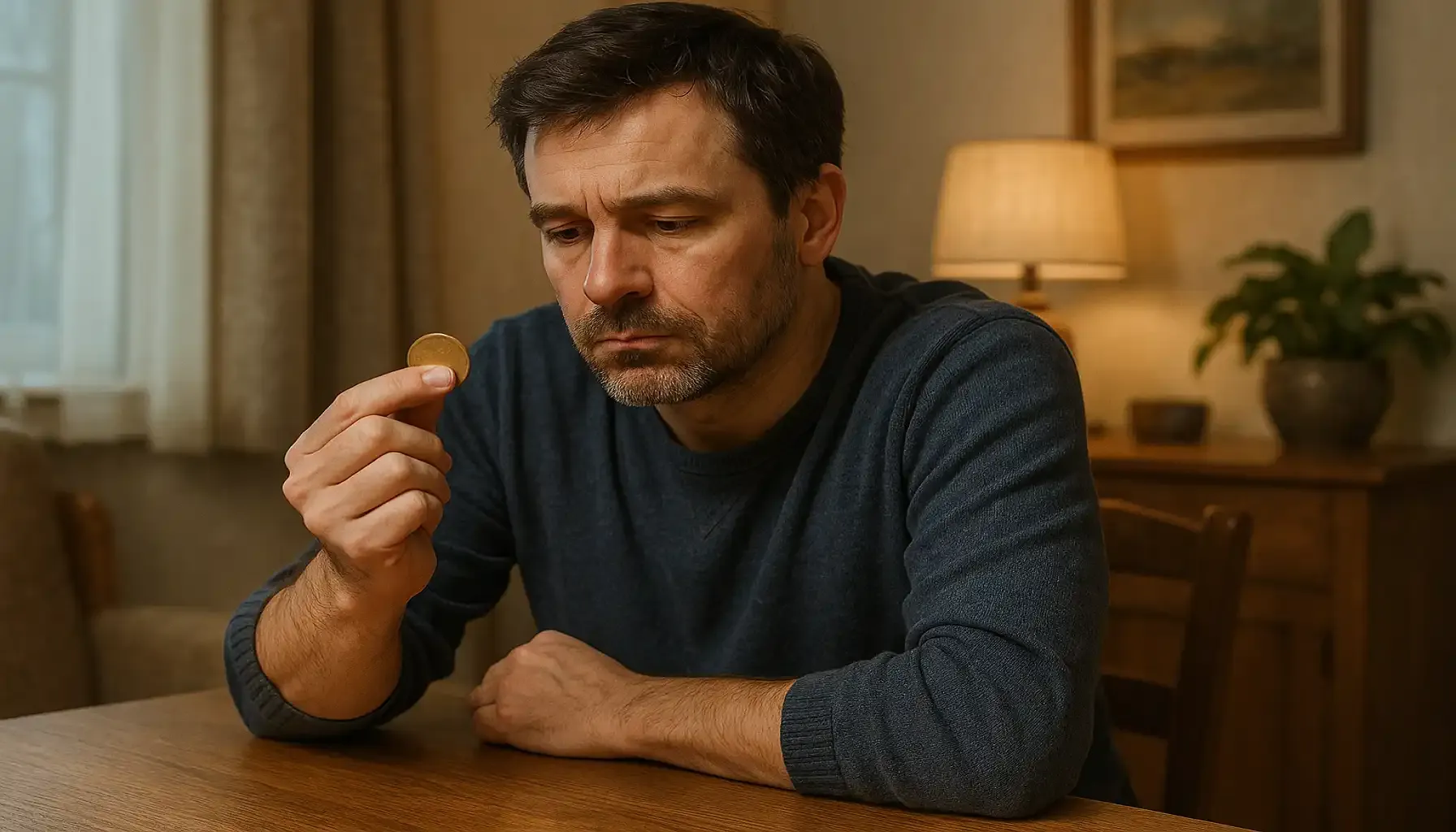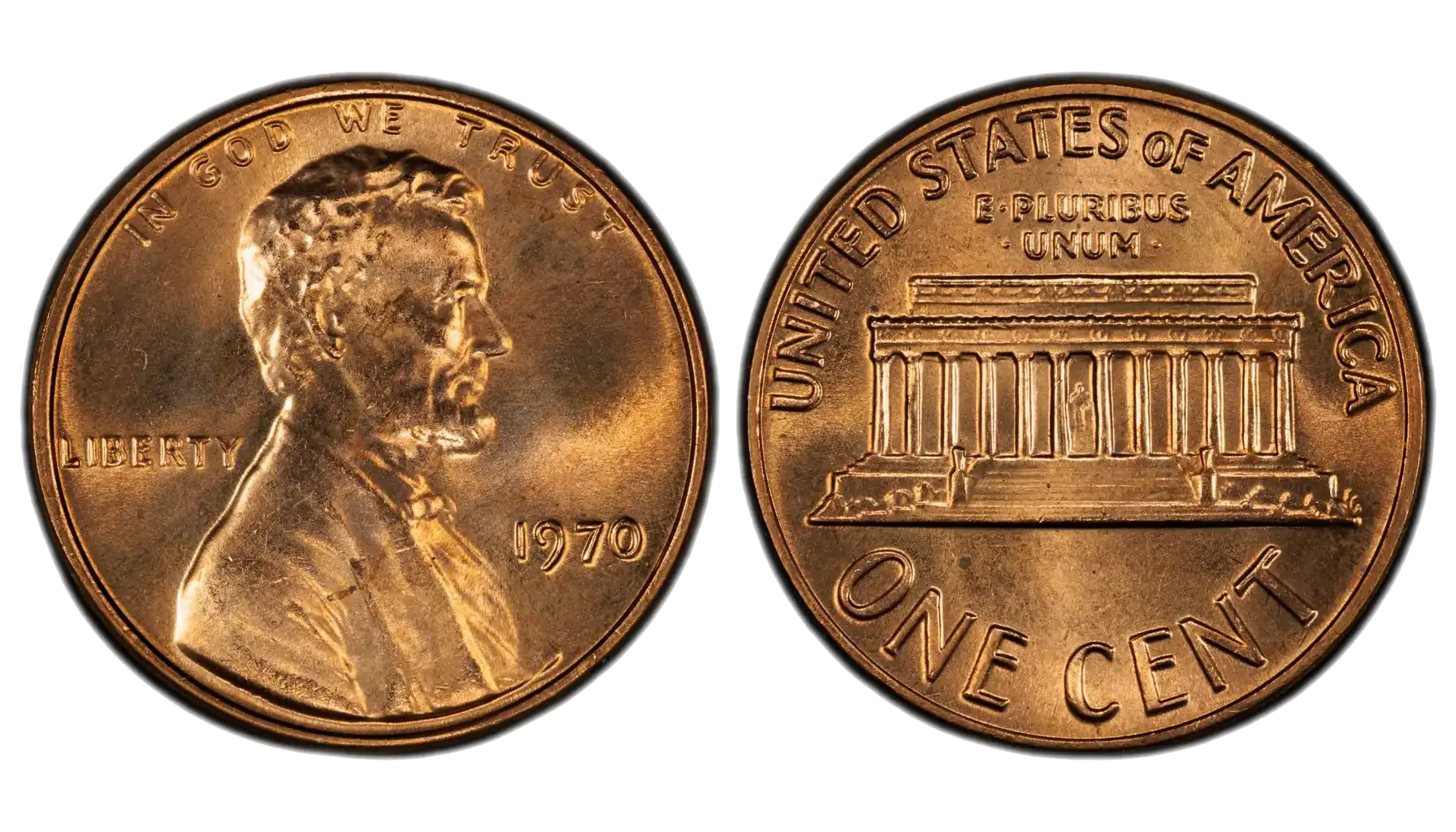Contents:
Every now and then, pocket change might present surprises, and some coins, e.g., Bicentennial quarters, can hold an unexpected degree of value trapped inside of them. These unique 25-cent coins struck in 1975 and 1976 in order to commemorate America’s 200th anniversary do attract collectors worldwide, while some instances might end up in your change one day.
But did you know that some of the quarters are worth far more than their face value of 25 cents? Which Bicentennial quarters are worth money? And which errors can boost the worth for good? Let us explore the origins and nature of these numismatic creations together and delve into how to check old coin value on the spot.

What Are Bicentennial Quarters?
To commemorate the 200th anniversary of the United States' sovereignty, there were released unique commemorative coins known as Bicentennial quarters. These items, in contrast to ordinary quarters, have a distinctive design that depicts a colonial drummer and a torch surrounded by thirteen stars on the reverse side. In addition to George Washington's famous image, the obverse side features two dates at the same time (1776–1976) rather than just one year.
Features of the Bicentennial Quarters | |
Obverse Design | The profile of George Washington with the dual date 1776-1976 |
Reverse Design | A colonial drummer with a torch |
Composition | Circulation Coins: 91.67% copper, 8.33% nickel. Collector Coins: 40% silver |
Weight | Copper-Nickel: 5.67 grams. 40% Silver: 5.75 grams |
Diameter | 24.26 mm |
Minting Years | Produced in 1975 and 1976, but all coins are dated 1776-1976 |
Mint Marks | No Mint Mark for Philadelphia Mint, “D” for Denver Mint, and “S” for San Francisco Mint |
In fact, these coins were produced in huge quantities by the US Mint, which is why the Bicentennial quarters value was not as exceptional as these coins themselves.
How Many Bicentennial Quarters Were Made?
Mint | Mintage |
Philadelphia (No Mint Mark) | 809,784,016 |
Denver (D) | 860,118,839 |
San Francisco (S) | 7,059,099 |
San Francisco (S) | 4,000,000 (approx.) |
San Francisco (S) | 5,000,000 (approx.) |
Nonetheless, certain kinds are significantly more expensive than their 25-cent face value, which comes down to the premium specimens, uncommon mint faults, or coins composed of 40% silver in special collector sets. So, what Bicentennial quarters are worth money, and how much do they cost?
Do Bicentennial Quarters Have Any Value? Main Factors
The value, indeed, is a variable figure that cannot stay the same year by year. Nevertheless, the rules of value formation do not change. Let us take a quick look at some of the aspects that may affect what makes Bicentennial quarters valuable.
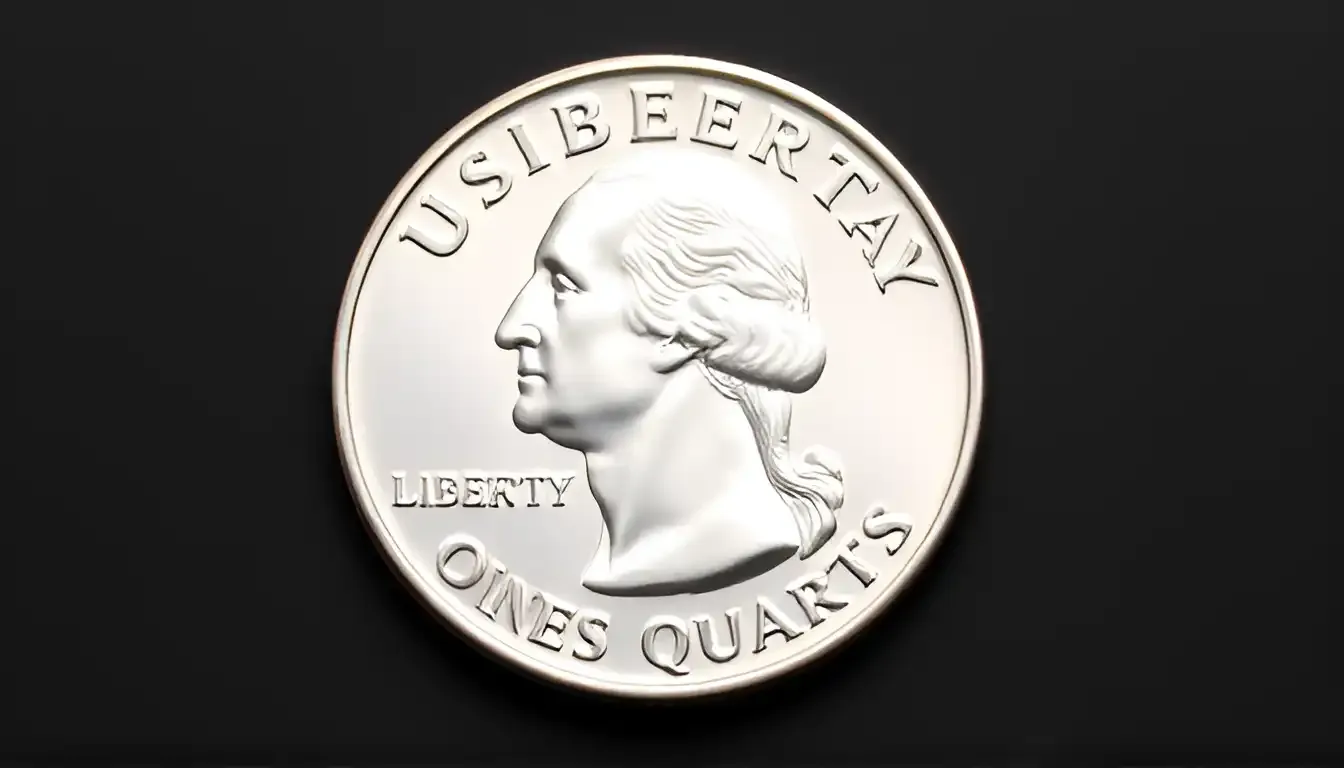
Condition (Grade): As a rule, flawless coins (those that bear no imperfections) are much more precious, and greater grades command greater prices, which is obvious for sure. Proof coins, which have mirror-like finish and exceptional details, are also worth more.
Composition: Common circulation coins are made of copper and nickel and, unless they are in mint condition, are often worth their face value. 40% Silver coins, in turn, are more prohibitive because of their silver content, and this is why these can be found in special collector sets that the San Francisco Mint distributes.
Mint Mark: Depending on the place of origin, the value may fluctuate. Proof and silver coins bearing the S mint mark are typically worth more than those from Denver (D) or Philadelphia (no mint mark).
Errors and Varieties: Are Bicentennial quarters worth anything? Yes, those that may boast erroneous appearance (rare Bicentennial quarters errors including clipped planchets, off-center striking, and doubled dies) and unique options are considered valuable and significant in the first place. Anyway, odd patterns matter.
Rarity: Why are Bicentennial quarters valuable? Although there were many of them produced, some varieties, such as premium silver proofs or peculiar error coins, are more valuable due to their rarity and inimitable nature.
Which Bicentennial Quarters Are Valuable?
Probably, one of the rare Bicentennial quarters worth money today is the 40% silver proof piece issued by the San Francisco Mint. Surely, these coins are extremely valuable, especially when they are in perfect condition, and were part of special collector sets.
At the auction, a premium PR-69 DCAM (Deep Cameo) sample with immaculate detailing and a mirror-like polish may bring at least $6,000. It is the best opportunity presented by the Bicentennial quarter series due to its superb condition, limited manufacturing, and silver content. But what about other options? Are all Bicentennial quarters worth money?
1. 1976 (P) Clad Bicentennial Quarter – No Mint Mark
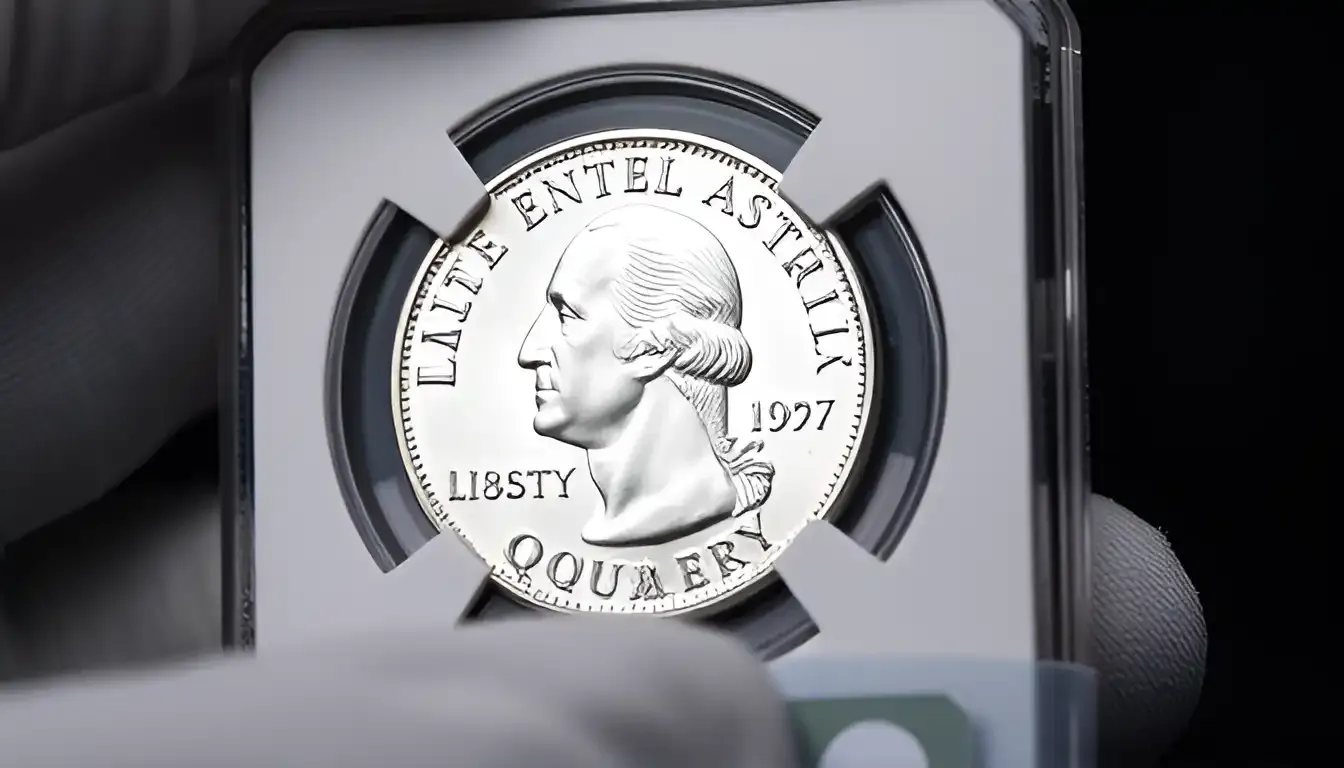
Mint: Philadelphia
Composition: Copper-nickel clad (75% copper, 25% nickel over copper core)
Mintmark: None
Circulation Strike (Most common of all Bicentennial quarters)
How much are Bicentennial quarters worth today?
Circulated: $0.25
Uncirculated (MS65+): $1–$5
High Grade (MS67): $35+
2. 1976-D Clad Bicentennial Quarter
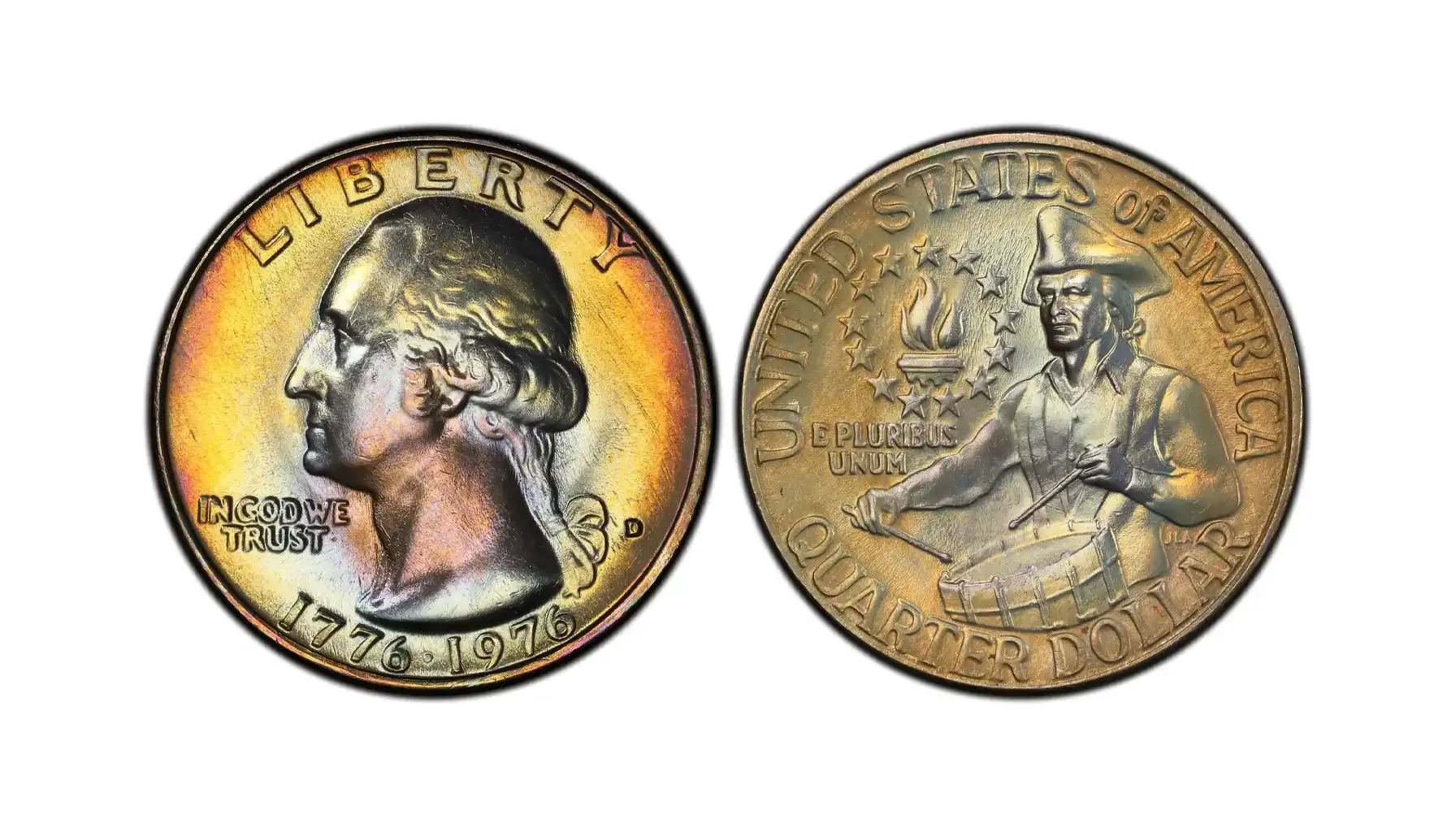
Mint: Denver
Composition: Copper-nickel clad
Mintmark: “D”
Circulation Strike (Often found in pocket change. High-grade examples fetch decent value.)
What are Bicentennial quarters worth today?
Circulated: $0.25
Uncirculated (MS65+): $1–$6
High Grade (MS67): $40+
3. 1976-S Clad Proof Bicentennial Quarter
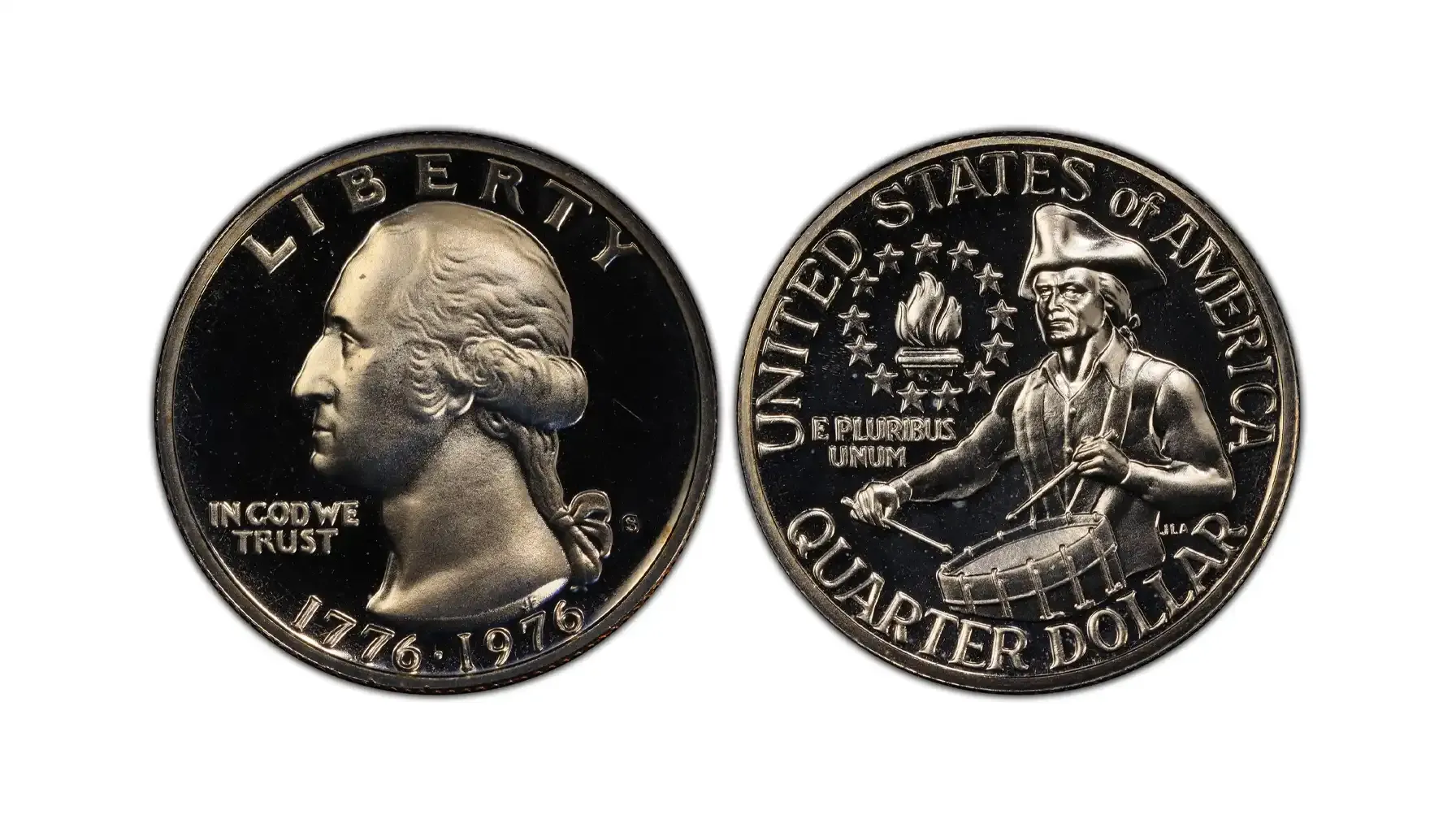
Mint: San Francisco
Composition: Copper-nickel clad
Mintmark: “S”
Proof Strike (Mirror-like surface with frosted details. Only found in proof sets.)
Is Bicentennial quarters worth anything?
Standard Proof: $1–$4
Deep Cameo Proof (PR69–70): $10–$30+
4. 1976-S 40% Silver Uncirculated Bicentennial Quarter
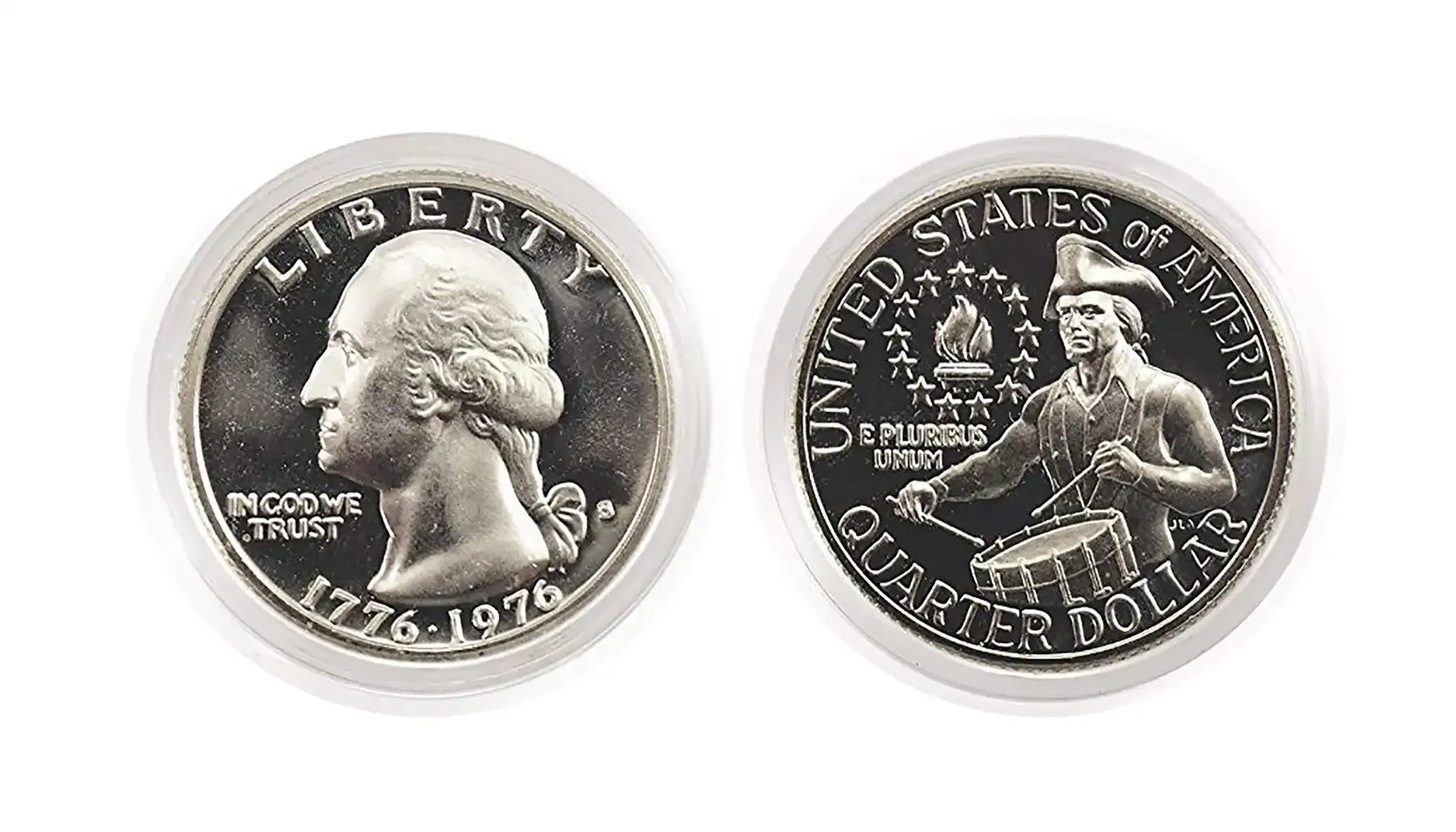
Mint: San Francisco
Composition: 40% silver (outer layers of .800 silver / .200 copper over a core of .209 silver / .791 copper)
Mintmark: “S”
Strike Type: Special Mint Set (SMS) or Uncirculated (Originally sold in 3-coin silver uncirculated sets with half dollar and dollar.)
What is the value of Bicentennial quarters?
Average Uncirculated: $5–$8
MS67+: $25–$40+
5. 1976-S 40% Silver Proof Bicentennial Quarter
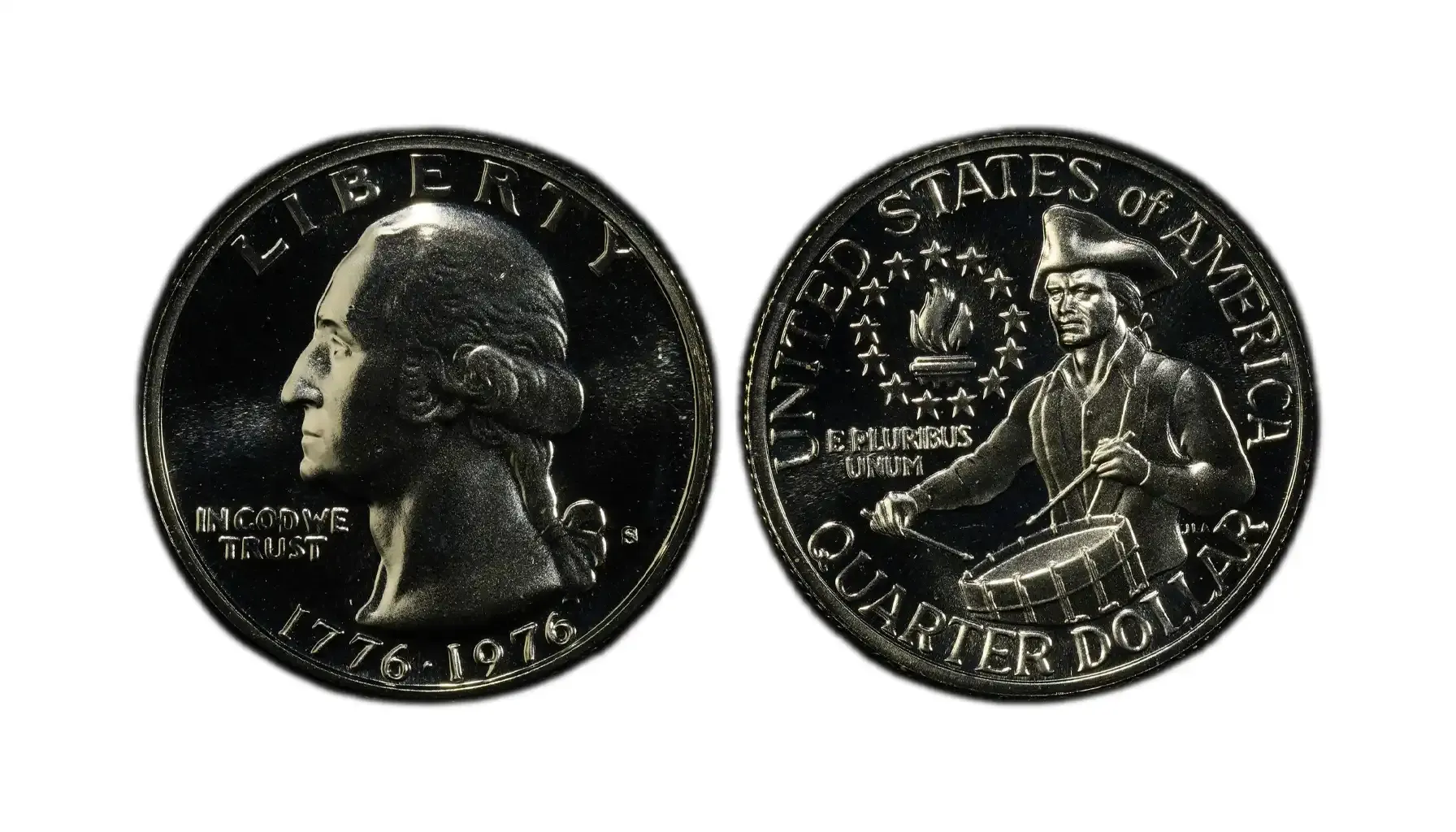
Mint: San Francisco
Composition: 40% silver
Mintmark: “S”
Strike Type: Proof (The most collectible of all Bicentennial quarters, especially in pristine proof condition.)
How much are the Bicentennial quarters worth?
Proof 65: $5–$10
PR69–70 Deep Cameo: $25–$60+
Summary Table: What's the Value of Rare Bicentennial Quarters?
Type | Mint Mark | Metal | Grade | Value |
1976 No Mintmark | None | Clad | MS65 | $1–$5 |
1976-D | D | Clad | MS65 | $1–$6 |
1976-S Clad Proof | S | Clad | PR69 | $10–$30 |
1976-S Silver Uncirculated | S | 40% Silver | MS67 | $25–$40 |
1976-S Silver Proof | S | 40% Silver | PR69–70 | $25–$60 |
How to Know If Yours Is Silver
Hold the coin sideways:
Copper-nickel coins show a copper-colored edge.
Silver-clad coins have a solid silver edge with no color bands.
Common and Rare Errors on Bicentennial Quarters
1. Double Die Obverse (DDO)
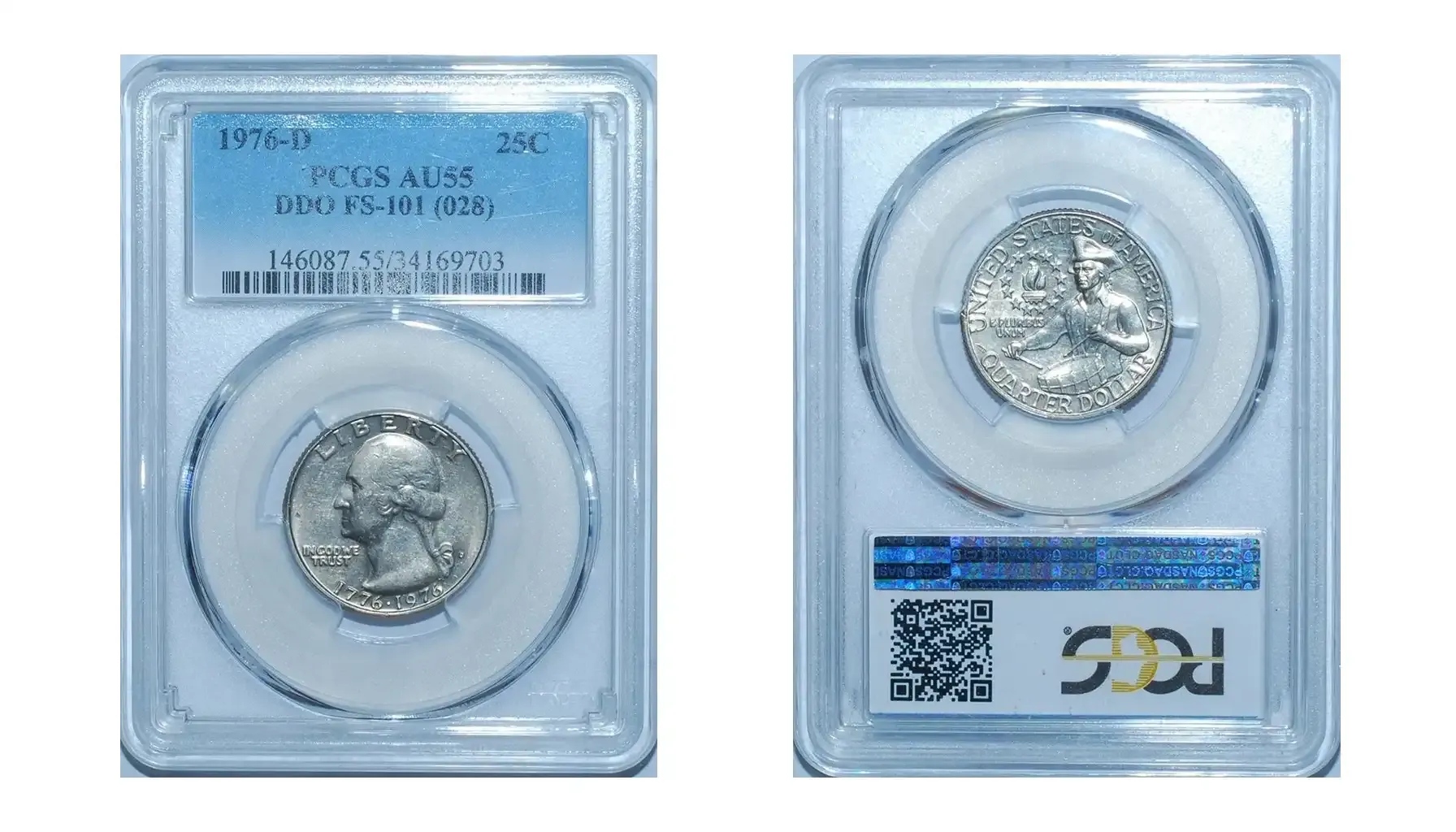
This occurs when the coin is struck by a misaligned die more than once, creating a “doubled” appearance on inscriptions.
What to Look for on Bicentennial Quarters:
The word “LIBERTY”
The dual date “1776–1976”
“IN GOD WE TRUST”
Are the Bicentennial quarters worth anything?
Minor doubling: $50–$150
Strong doubling (especially on lettering): $500–$1,500+ in MS condition
2. Off-Center Strike
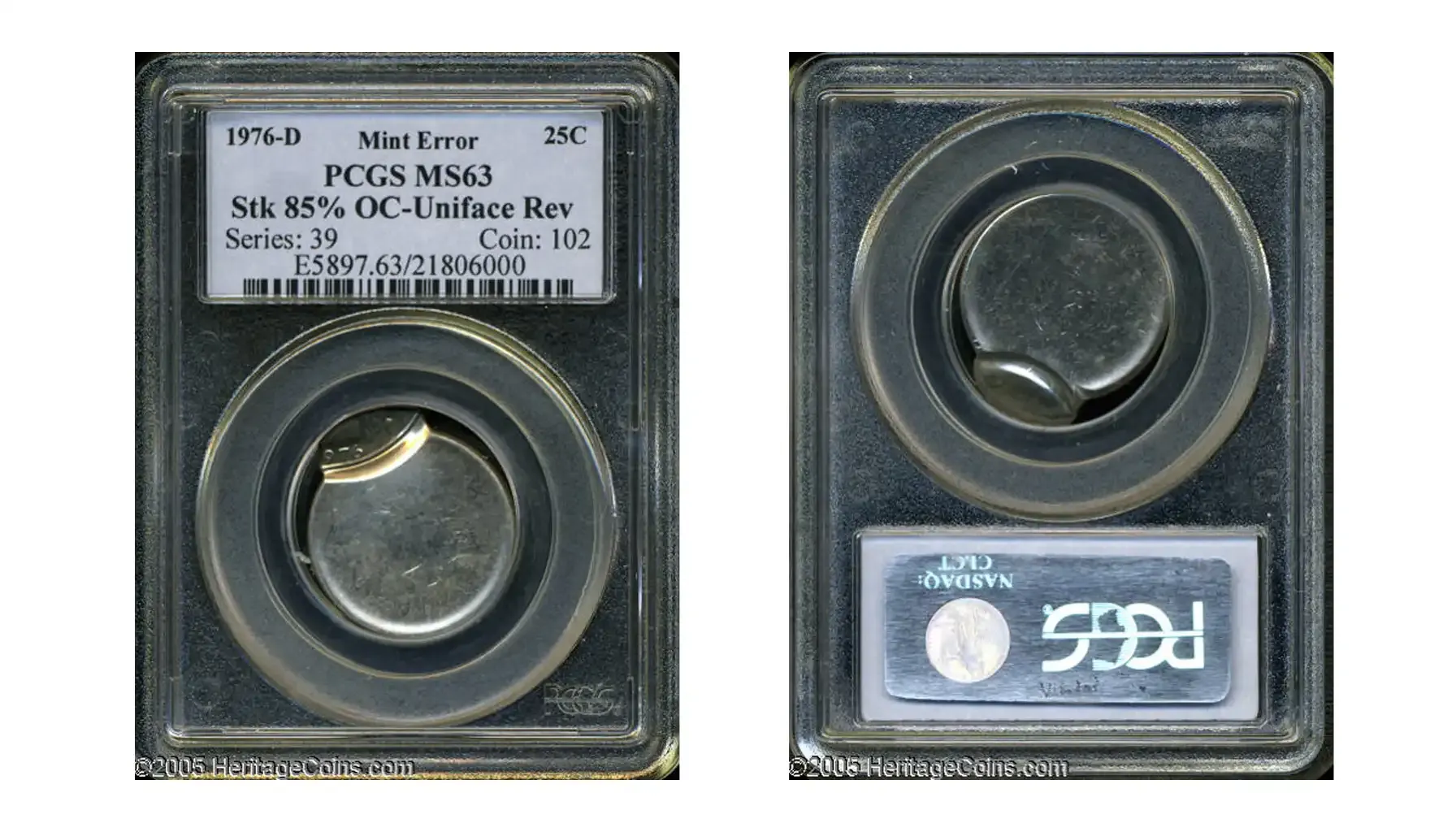
The coin is not properly aligned during striking, causing part of the design to be missing or shifted.
Identification Tip: Look for coins where part of the drummer or legend is missing or incomplete.
Are Bicentennial quarters worth money?
5% off-center: $20–$40
10–50% off-center with visible date: $75–$250+
3. Clipped Planchet
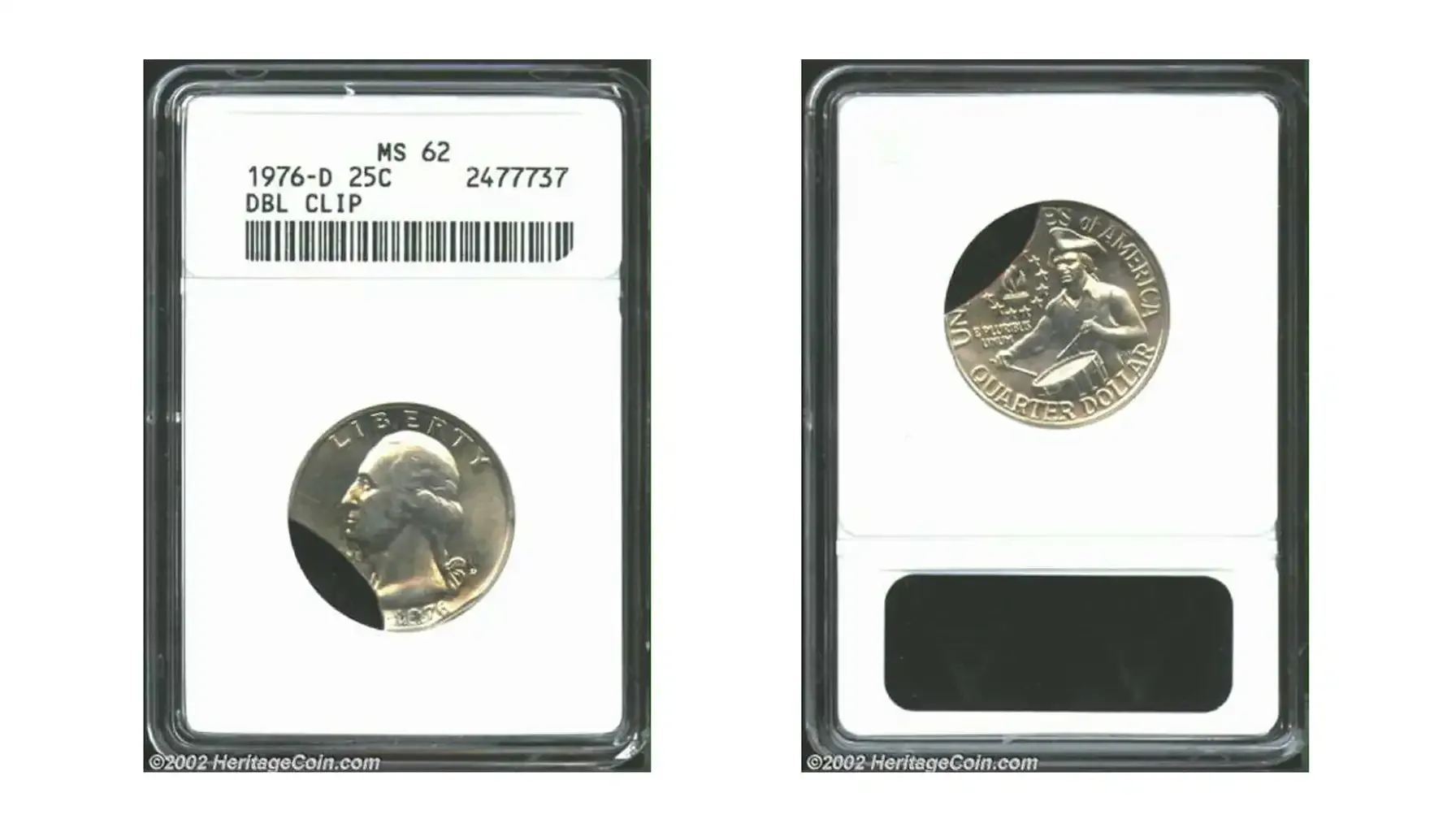
A curved portion of the coin is missing due to an improperly punched blank (planchet).
Look For:
A crescent-shaped cutout anywhere on the edge.
Date and details must still be visible for higher value.
Value:
Minor clip: $25–$75
Full “bowtie” clip with date: $150–$300
4. Die Break / Cud Error
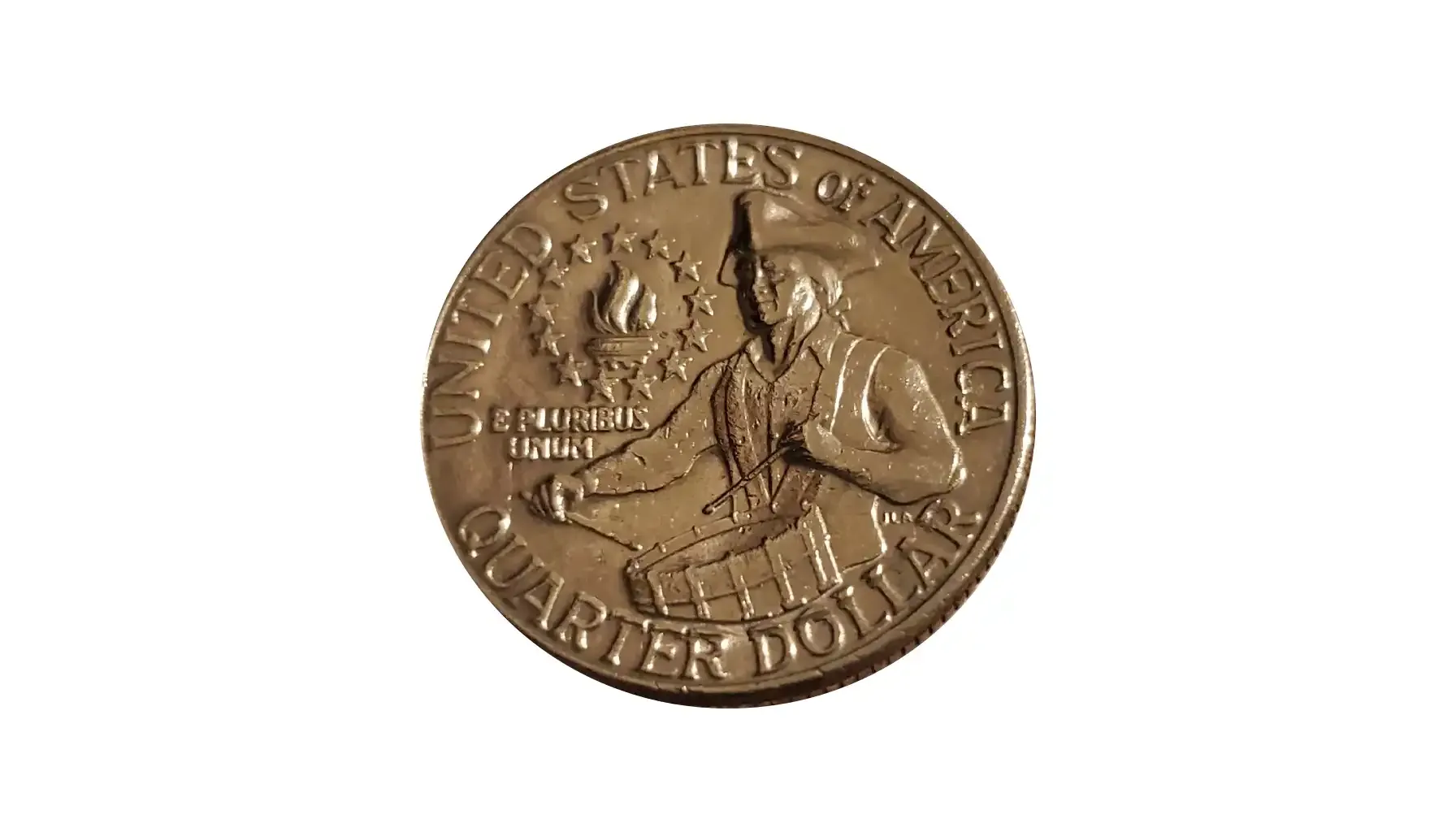
A section of the die breaks off, and that void is filled with metal during striking, causing a raised, blob-like area.
Where It Appears: Usually along the rim or affecting the drummer’s head or drum.
Value:
Small die cracks: $10–$25
Major rim cuds: $75–$200+
5. Struck on the Wrong Planchet
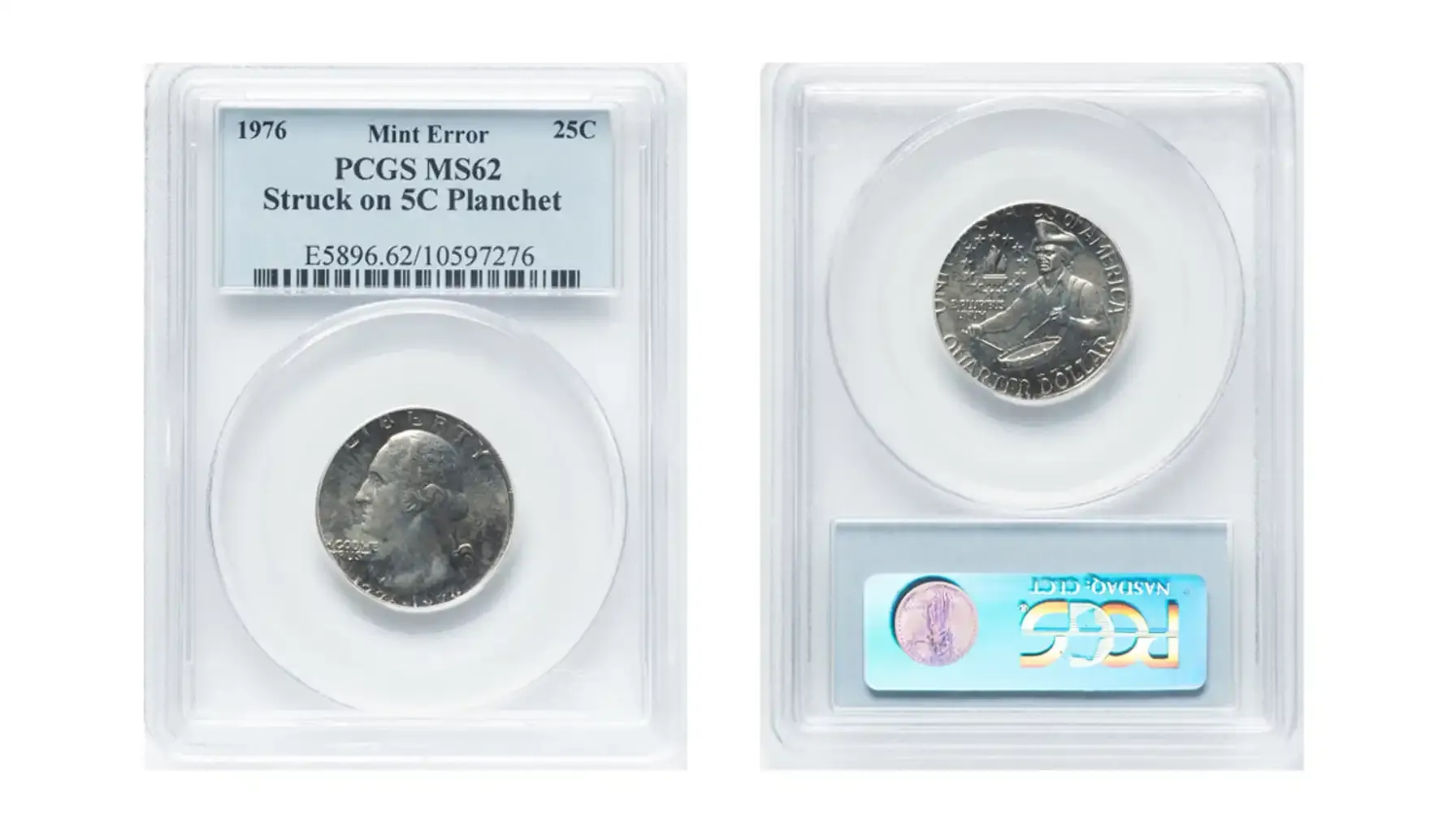
1975 and 1976 Bicentennial quarters accidentally struck on a planchet intended for another denomination (like a nickel, dime, or foreign coin).
How to Tell:
Coin will be underweight or overweight
May have a strange color or size
Details look “cut off” around the rim
Value:
Nickel planchet: $750–$2,000
Foreign planchet (e.g., Philippine 25 sentimo): $1,500–$3,000
6. Missing Clad Layer
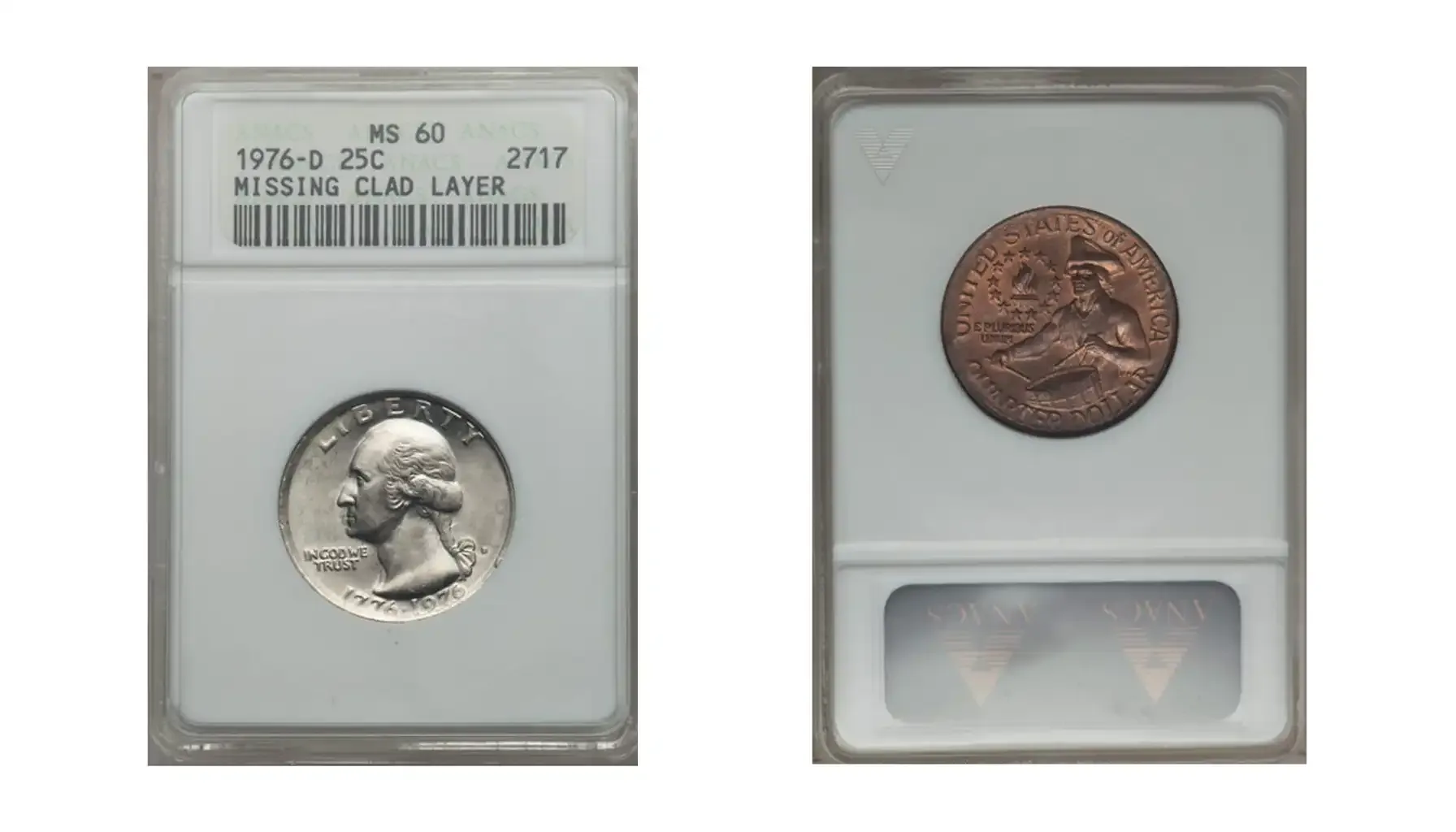
One of the nickel layers on a clad quarter is missing, exposing the copper core.
Appearance: Coin looks coppery on one side and normal on the other.
Value: $100–$300
7. Proof Errors (1976-S)
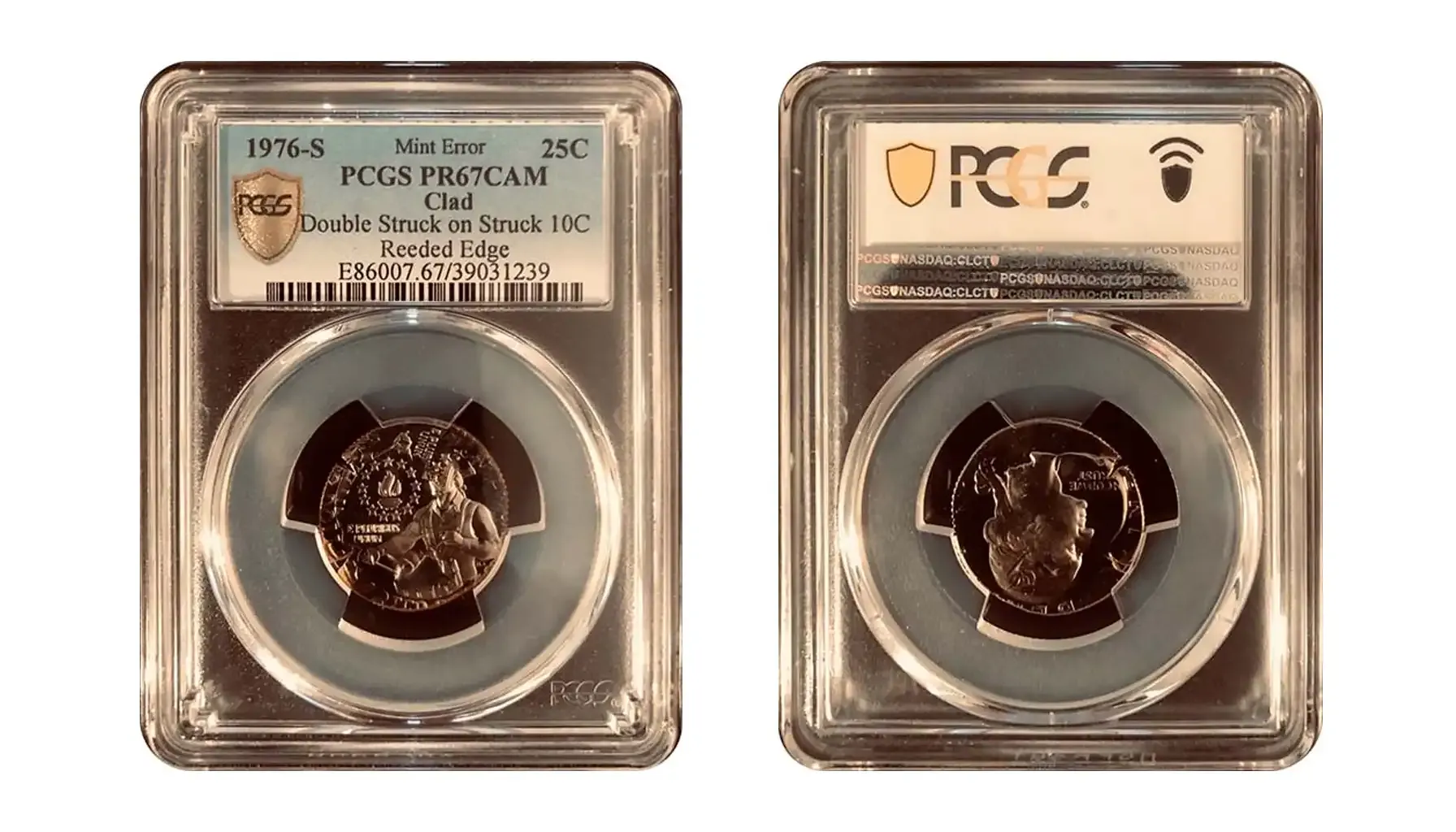
Even proof coins aren't immune to errors.
Types include:
Frosted devices over polished fields (improper cameo)
Double-struck proofs
Mirror missing in fields
Value:
Minor: $50–$150
Major: $300–$1,000+
Some Exceptional Bicentennial Quarters Worth a Lot of Money
Even though the majority of Bicentennial quarters are mediocre (if we can say so), some remarkable examples like 1976 quarters may be quite valuable. So, how much is a Bicentennial quarter worth by type?
Type | Value Range | Notes |
40% Silver Proof Quarters (San Francisco Mint, “S” Mint Mark) | $500 to $6,000 | Produced for special collector sets and contain 40% silver |
Mint State Quarters in MS-67 or Higher | $1,000 or more | Common options are regular copper-nickel quarters from Philadelphia (no mint mark) or Denver (D) |
Error Coins | $100–$500 | These are basically to include double die errors, clipped planchets, off-center strikes, etc. |
Deep Cameo Proof Quarters | $200–$1,000 | Known for their frosted designs and mirror-like fields |
Toned Bicentennial Quarters | $1–$1,000 | Unique, natural toning caused by oxidation over time |
These traits are essential if you wish to identify a rare coin. Nevertheless, should you struggle to detect unusual characteristics, it is always ok to rely on additional resources. Some apps (e.g., Coin ID Scanner) can offer prompt coin identification with detailed reports and insights regarding your particular coin. Besides, do not forget to manage your collection and keep track of any new numismatic resident. Coin ID Scanner is always here to help with that!
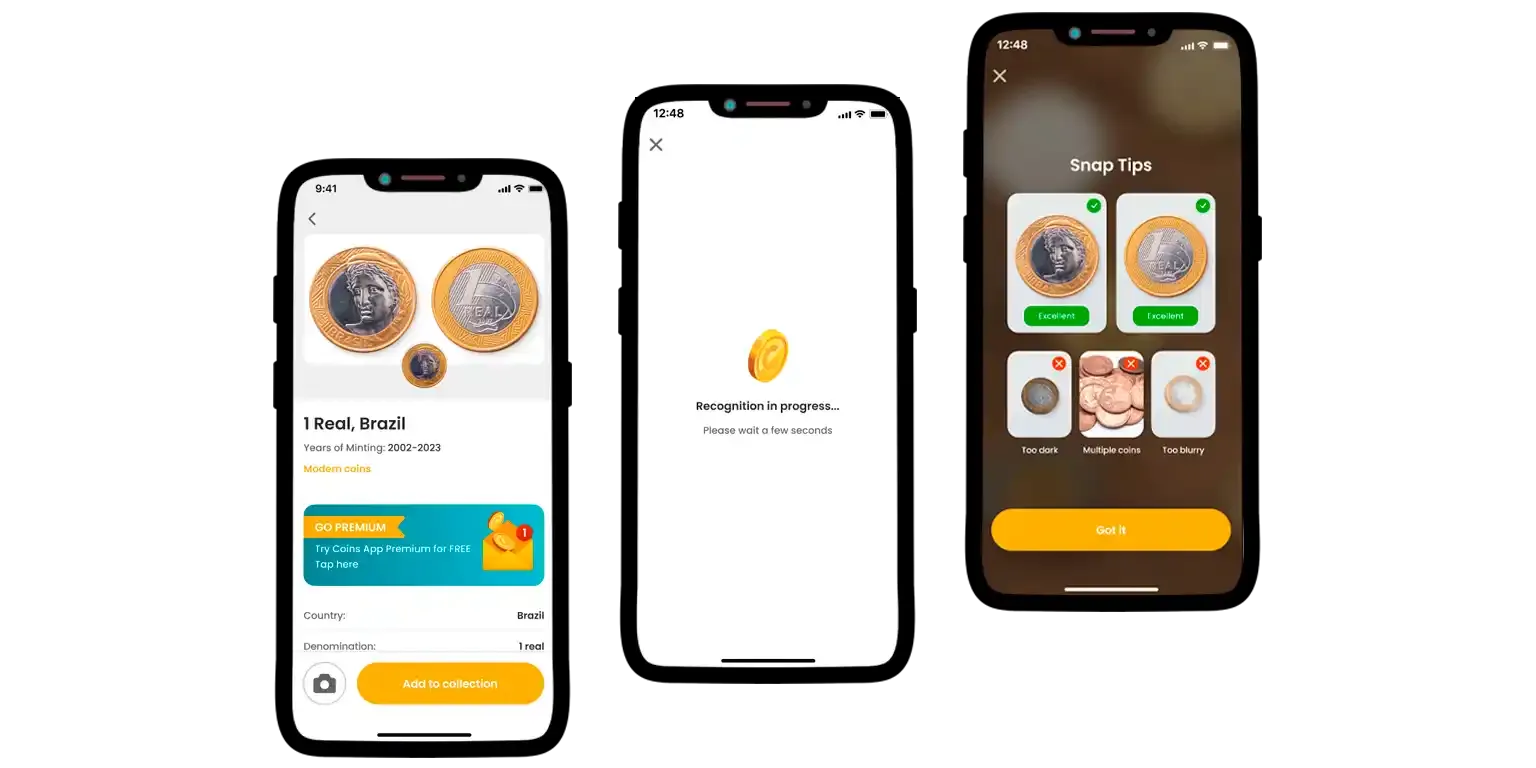
Selling: Why and How?
Where can I sell my Bicentennial quarters? It can be an economically viable choice if you have found out it is worth something. But why exactly sell them? Among the most widely spread reasons are high demand, profit potential seen by coin enthusiasts, and market trends. Nevertheless, so as to sell Bicentennial quarters that are worth money properly, it is necessary to take into consideration a few recommended steps as follows:
Determine Value: To verify the authenticity and condition of your coin, have it evaluated by a reputable organization like PCGS or NGC to obtain a certificate claiming its grade. If you wish to determine a coin's market value, look up recent auction prices for comparable coins, too.
Select the Best Selling Platform: Where to sell Bicentennial quarters? It is an open secret local dealers may pay a little less than market value, but they can offer instant sales instead. Besides, with platforms like eBay, you can easily reach a large audience, but keep in mind seller fees.
Get Your Coin Ready for Sale: To maintain its grade, keep the coin in its protective case only! Under ideal conditions, the 1965 quarter or the 1976 Bicentennial quarter worth a lot of money may not corrode or deviate in terms of its appearance.
Use Your Negotiation Skills Wisely: Do not accept the first offer unless it satisfies or goes beyond your expectations. So as to make sure you are receiving a fair price, think about requesting several appraisals.
Avoid Scams: Trade only through trustworthy vendors or platforms that offer buyer/seller protection protocols.

Commemoration is only one aspect that may characterize the nature of the Bicentennial quarters that are worth money. In fact, they can be praised for their value, especially if these feature rare errors, high grades, or other notable deviations (=abnormalities), too.
Anyway, take a closer look at your collection – you might already own one of these precious pieces of American history so far.

